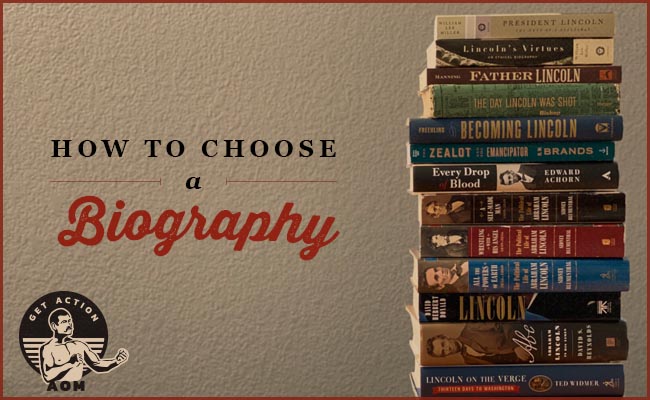
Biographies are a particularly rich genre of books. By reading them you can learn not only about an individual’s life, but through that personal prism, find an accessible window to the historical period in which they lived. Paradoxically, the more particular something is, the more generally it can be applied, and even if some figure lived a very different and much more epic life than yours, following the contours of their story can grant you plenty of insight into your own.
But what do you do when you decide to read a biography of someone, and find there are multiple options to choose from?
There are said to be upwards of 15,000 books about Abraham Lincoln, the most of any figure in history outside of Jesus. Plenty of other figures have bibliographical files reaching into the thousands, and countless other persons of lesser historical importance have more than a few major biographies about them too. With numbers like that, selecting the best one to read can turn a simple quest for a book to read into a long-term research project. But there are a few methods you can use to sort through the options and find the right biography for you, which I’ll detail below.
Consider the Time Period and Publishing Date
If an individual was particularly eminent, a new biography about them is likely to come out every decade or two. You can find books on the same person published in 1920, 1970, and 2020, and each will give you a very different reading experience; for example, a biography of Thomas Jefferson from the 1950s paints a different picture of the man than does a biography of him from the last decade. All books, just like their subjects, are products of their time.
One of the main differences between older and newer biographies is the way they approach their subjects and how the author views what a biography is “for”:
Older Bios
Older biographies tend to concentrate more on a subject’s outward accomplishments than their inner thoughts and private life. They don’t get much into interpersonal relationships nor traffic in psychological speculation. Digging into an individual’s private life was formerly seen as inappropriate, and older biographies are written more like eulogies — summaries of the broader, publicly-known contours of a person’s life, with their failings downplayed, and their achievements emphasized, all tinged with a bit of romanticism and idealism.
In line with this, older biographies are sometimes trying to subtly or not so subtly offer a moral education along with an individual’s story, and are often written in a more inspiring, soul-stirring manner. For example, Robert Richardson’s 1986 biography of Thoreau is far more meaningful than anything new on the market. In general, the most transcendent biographies I’ve read — those that inflame my thumos — are on the older end. It’s a style of writing no longer in vogue, but still worth consuming.
Newer Bios
Newer biographies are written in a more journalistic style, in which the author’s aim is more to pass along information than to impart inspiration; as such, they tend to offer a more balanced, less mythical and romantic view of the past.
Modern biographies often contain updated, more accurate information about their subject, gleaned from declassified medical records, previously family-kept letters, and recently
No comments:
Post a Comment